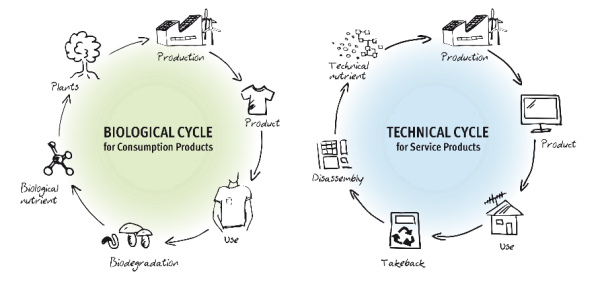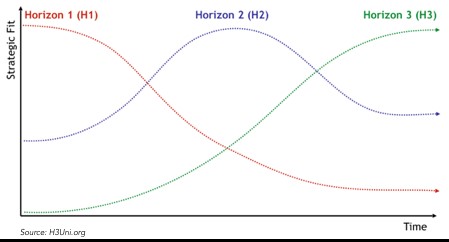In recent years, the term sustainability has lost much of its original significance and appeal; regeneration has entered the conversation as the crowd favourite to be its trendy new replacement. Except that it is not new at all; the concept of regeneration has been around since the 1970s and originally refers to a set of farming principles that take inspiration from nature.
Regeneration is seen as one of the most revolutionary approaches in mainstream conscience for addressing environmental issues, but does it have to rival sustainability to achieve its goals? Sustainability focuses on doing less bad to sustain the world for future generations, whether this takes the form of producing fewer emissions or waste, or less energy use. Meanwhile, regeneration prioritises doing more good over doing less bad.
While sustainability and regeneration approach environmental issues from different angles, they are not mutually exclusive, rather just two approaches to guide the journey to where we need to be.
The principles of regeneration
As the conversation changes, we can go beyond sustaining the planet in its damaged state to restoring it to its natural potential by combining regenerative thinking with the best elements of sustainability. Robert and Maria Rodale defined seven regenerative principles:
- pluralism
- protection
- purity
- permanence
- peace
- potential
- progress.
The regenerative principles not only transform the environmental world, but also the social one — just as sustainability has more to offer than simply doing less bad.
Although regenerative agriculture dominates regeneration conversations, regenerative thinking extends far beyond the agriculture sector. From regenerative design (popularised by Cradle to Cradle) to regenerative futures, we explore how we can apply regenerative principles across all sectors. This starts by adopting a holistic approach to measuring environmental performance with life cycle thinking.
A holistic outlook for progress and potential
Regenerative thinking demands a systems perspective. For environmental problem-solving a Life Cycle Assessment (LCA) offers an effective way to extend this thinking. An LCA measures the environmental performance of a product using many indicators and considers impacts across a product’s full life cycle. This means that it can avoid ‘burden-shifting’ – solving one problem by creating another.
This helps us understand the principles of potential and progress for products. The environmental data in an LCA includes water consumed, energy used and the total carbon footprint. This gives a baseline to measure progress.
LCA studies are valuable because they understand that products exist as part of an ecosystem.

Source: © EPEA GmbH – Part of Drees & Sommer
When data from an LCA and the Cradle to Cradle® (C2C) concept are combined, it gives a great opportunity for regenerative design.
Back to nature’s drawing board for permanence and purity
The C2C design concept reflects most of Rodale’s regenerative principles. Like these principles, C2C also looks to nature and natural ecosystems as its inspiration. Founded by Michael Braungart and William McDonough, C2C sees design as a ‘regenerative force’.
The principles of purity and permanence are especially evident in C2C. C2C emphasises pure materials in permanent cycles so materials can be used over again without loss of quality. All materials used are defined in C2C as ‘nutrients’ in one of two cycles:
- a biological cycle where they are returned without harm back into the biosphere, or
- a technical cycle where the material is reused continuously without losing value.
Cradle to Cradle Certified™ recognises the C2C design concept as it assesses five environmental and social categories.

Source: © EPEA GmbH – Part of Drees & Sommer
Good environmental data enables regenerative practices. LCAs give a reliable source for this information. While an LCA may measure progress and identify improvements, it can be highly complementary to C2C. The holistic approach of both tools can drive a regenerative future.
A regenerative future for pluralism and protection
Regenerative principles could reshape how we think about products, services and the future. Regenerative tools for future thinking offer protection by helping to build an organisation’s resilience. These tools also reflect the pluralism principle with their focus on new ways of thinking that can lead to new actions. This leads to a more resilient company able to deal with crises.
One of these tools is the Three Horizons framework. This encourages a company to explore how they think about the future. The ‘horizons’ are three lenses to look at the world – the framework explores how they interact and connect. The first ‘horizon’ focuses on today’s challenges and the third on a visionary view of the future. The second looks at actions that can assist an organisation to transition from the first horizon to the third.

Source: H3Uni.org
Three Horizons draws out perspectives that can help move from a sustainable today to a regenerative tomorrow.
Bringing it all together for peace
To regenerate means to grow, but more importantly, particularly after loss or damage. It is not enough to reduce negative impact, we need to restore and create a positive impact.
This ties in closely with Rodale’s principle of peace. This seeks to replace damaging or destructive patterns with positive ones. In energy generation this will need to be the transition to 100% renewable energy. While New Zealand's electricity generation is around 80% renewable, the country's emissions profile overall has plenty of room for improvement. Transport, manufacturing, and construction provide great opportunities to phase out fossil and oil-derived fuel use.
A reduced reliance on finite energy sources can reduce negative impacts. There should also be continuous innovation to bridge the gap between sustainability and regeneration.
An innovator in New Zealand is changing bioenergy and biomaterials using pine trees. Futurity has a biorefinery that uses local pine trees to create biogas and products that can replace oil-derived alternatives. These are used in plastics, resins, adhesives and energy storage. Futurity plan to use sustainably-managed trees and wood waste for the biorefinery, improving carbon sequestration and reducing wood waste. Futurity’s innovative approach uses LCA to measure the environmental performance of its products and find further areas to improve.
The road ahead
Inspired by nature, regeneration gives us enormous potential for a positive environment. We need to shift from sustaining to regenerating the planet. The best way to bridge the gap will be to combine elements of both concepts. Rodale’s regenerative principles can guide this evolution which will require continuous innovation, reliable data, a holistic approach to environmental problem-solving and a readiness to embrace a regenerative future.
By Barbara Nebel and Femi Perumbally
This article was first published in NZ Manufacturer magazine, July 2020.